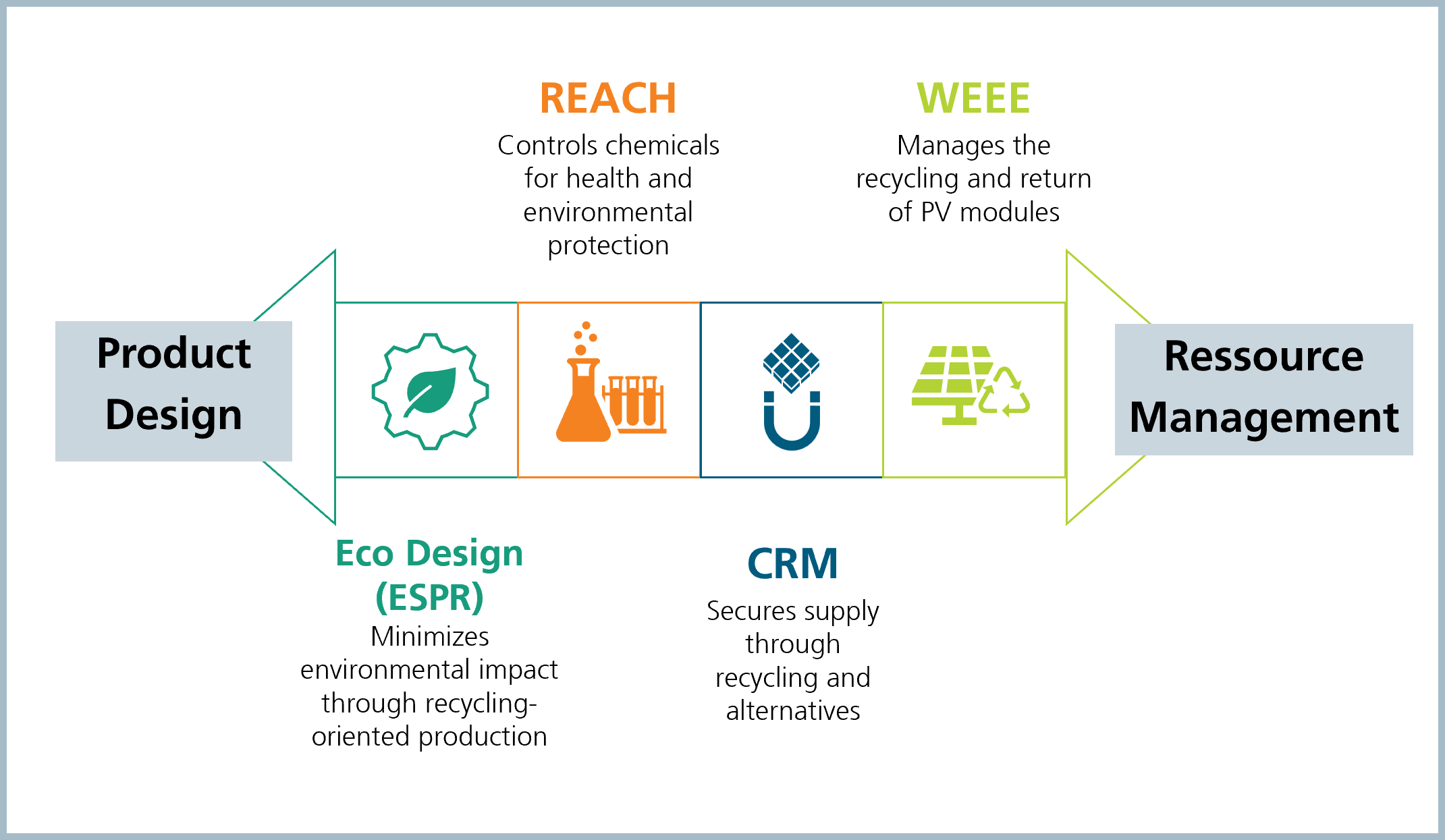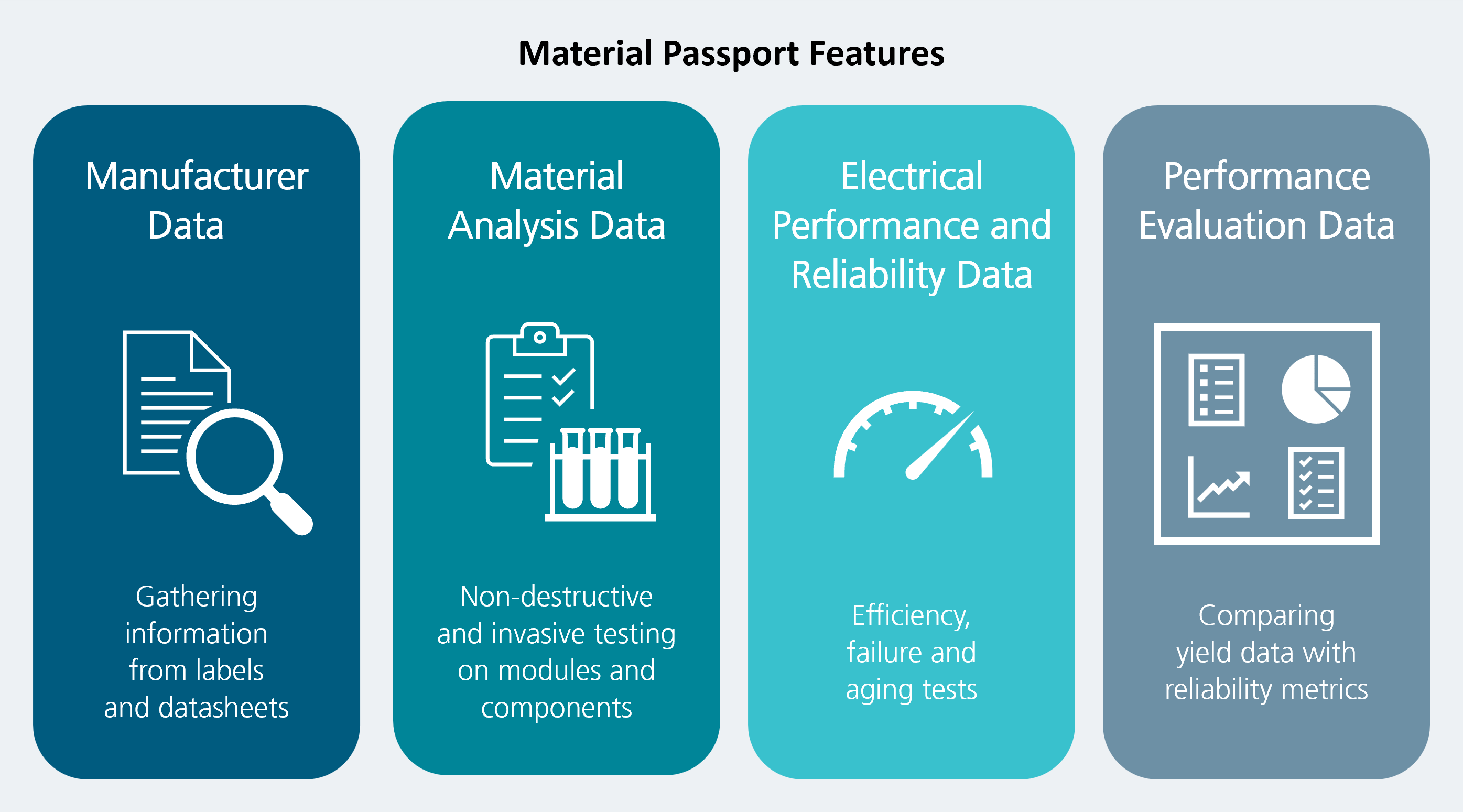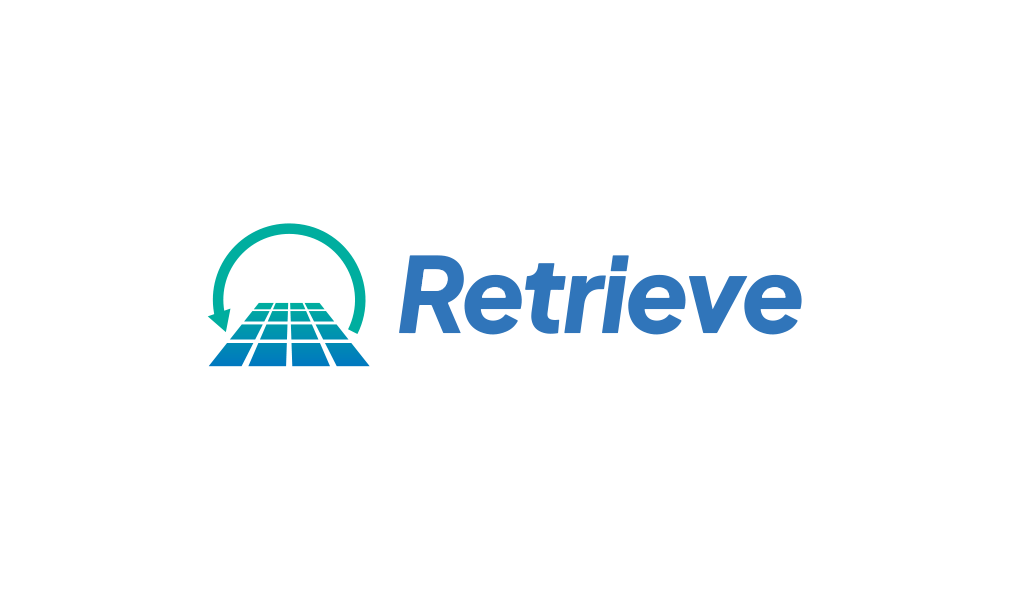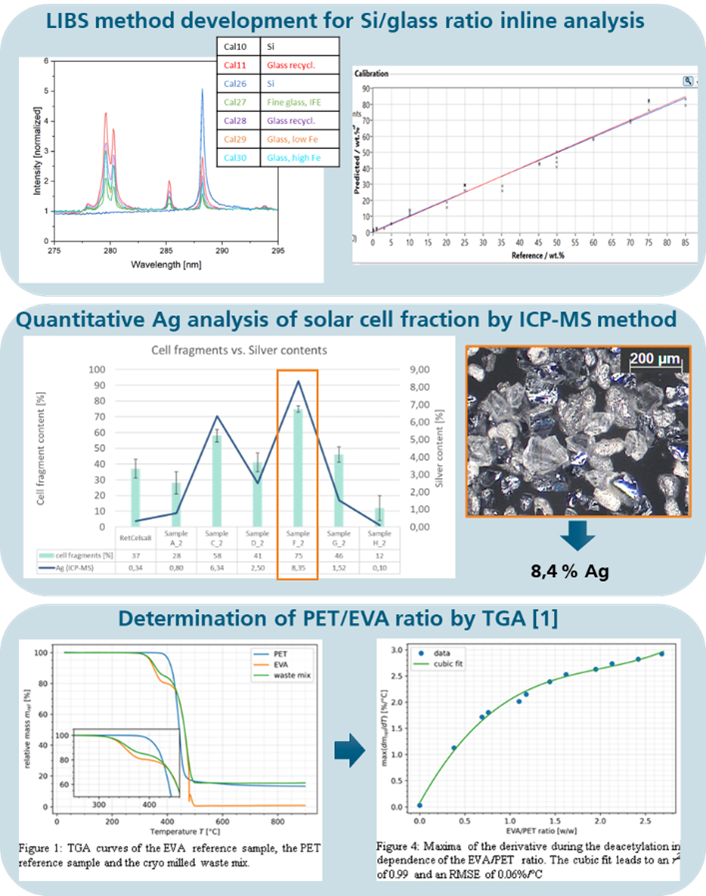Sustainability in PV – Why a Material Passport Is Needed
A material passport is key to ensuring transparency, product safety, and recyclability in solar technology. While solar energy is sustainable by nature, optimizing the resource use across the entire PV life cycle is essential. Growing regulatory pressure on manufacturers and operators—nationally and internationally—makes traceable material data increasingly important for compliance and circularity.
Efforts by the EU to promote a sustainable and resource-efficient economy include, for example:
| Regulation | Description |
|---|---|
| Ecodesign for Sustainable Products Regulation (ESPR) | The Ecodesign for Sustainable Products Regulation (ESPR) aims to minimize the environmental impact of products, including photovoltaic (PV) modules, throughout their entire life cycle. It introduces strict requirements for design, manufacturing, and distribution to support resource efficiency, recycling, and carbon footprint reduction. A key feature is the Digital Product Passport (DPP), which provides transparent product data to enable sustainable choices and improve supply chain traceability. |
| Critical Raw Materials (CRM) | The EU's CRM strategy identifies materials that are of strategic importance to the solar industry, such as silicon, indium, and silver. This strategy aims to reduce dependence on these raw materials by promoting recycling and sustainable sourcing practices. Additionally, the development of alternative materials is supported to ensure supply security for the photovoltaic industry. |
| Registration, Evaluation, Authorisation and Restriction of Chemicals (REACH) | The REACH Regulation ensures the safe use of chemicals by requiring companies to register, evaluate, and authorize substances. It aims to protect health and the environment, while promoting the restriction or substitution of hazardous chemicals. For the solar industry, REACH demands strict declaration and traceability of pollutants—throughout production, use, and recycling. Relevant substances in PV modules include PFAS in backsheets, lead (Pb) in solder, and antimony (Sb) in glass. |
| Waste Electrical and Electronic Equipment (WEEE) | The WEEE Directive (2012) and Germany’s Electrical and Electronic Equipment Act have governed the collection, recycling, and disposal of PV modules since 2015. Manufacturers must finance disposal and ensure take-back of old devices. As PV modules are classified as household appliances, they fall under mandatory recycling schemes. Organizations like PV Cycle manage the recovery of valuable materials, reducing the environmental impact of e-waste. |
New EU regulations – such as the Ecodesign Directive (2009/125/EC), Regulation (EU) 2019/2021, and the proposed Energy Label for PV modules – are becoming increasingly relevant. These frameworks set mandatory criteria for energy yield, reliability, recyclability, and carbon footprint. However, challenges remain due to the lack of standardized carbon footprint methodologies and limited data transparency in the PV sector.
 Fraunhofer Center for Silicon Photovoltaics CSP
Fraunhofer Center for Silicon Photovoltaics CSP


